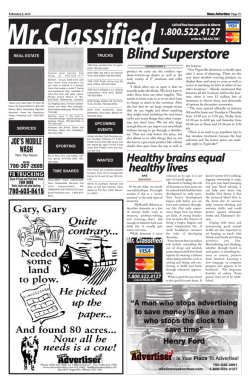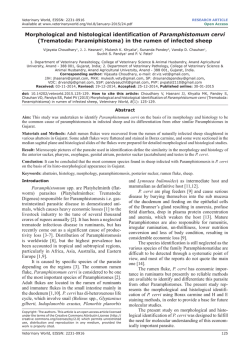
The Statistical Crisis in Science - Department of Statistics
50 shades of gray: A research story Brian Nosek, Jeffrey Spies, and Matt Motyl: Participants from the political left, right and center (N = 1,979) completed a perceptual judgment task in which words were presented in different shades of gray . . . The results were stunning. Moderates perceived the shades of gray more accurately than extremists on the left and right (p = .01). They continue: Our design and follow-up analyses ruled out obvious alternative explanations such as time spent on task and a tendency to select extreme responses. Enthused about the result, we identified Psychological Science as our fall back journal after we toured the Science, Nature, and PNAS rejection mills . . . The preregistered replication Nosek, Spies, and Motyl: We conducted a direct replication while we prepared the manuscript. We ran 1,300 participants, giving us .995 power to detect an effect of the original effect size at alpha = .05. The result: The effect vanished (p = .59). 2/45 3/45 4/45 5/45 6/45 The famous study of social priming 7/45 8/45 Daniel Kahneman (2011): “When I describe priming studies to audiences, the reaction is often disbelief . . . The idea you should focus on, however, is that disbelief is not an option. The results are not made up, nor are they statistical flukes. You have no choice but to accept that the major conclusions of these studies are true.” 10/45 The attempted replication 11/45 Daniel Kahneman (2011): “When I describe priming studies to audiences, the reaction is often disbelief . . . The idea you should focus on, however, is that disbelief is not an option. The results are not made up, nor are they statistical flukes. You have no choice but to accept that the major conclusions of these studies are true.” Wagenmakers et al. (2014): “[After] a long series of failed replications . . . disbelief does in fact remain an option.” 12/45 Alan Turing (1950): “I assume that the reader is familiar with the idea of extra-sensory perception, and the meaning of the four items of it, viz. telepathy, clairvoyance, precognition and psycho-kinesis. These disturbing phenomena seem to deny all our usual scientific ideas. How we should like to discredit them! Unfortunately the statistical evidence, at least for telepathy, is overwhelming.” 14/45 This week in Psychological Science I I I I I I I “Turning Body and Self Inside Out: Visualized Heartbeats Alter Bodily Self-Consciousness and Tactile Perception” “Aging 5 Years in 5 Minutes: The Effect of Taking a Memory Test on Older Adults’ Subjective Age” “The Double-Edged Sword of Grandiose Narcissism: Implications for Successful and Unsuccessful Leadership Among U.S. Presidents” “On the Nature and Nurture of Intelligence and Specific Cognitive Abilities: The More Heritable, the More Culture Dependent” “Beauty at the Ballot Box: Disease Threats Predict Preferences for Physically Attractive Leaders” “Shaping Attention With Reward: Effects of Reward on Spaceand Object-Based Selection” “It Pays to Be Herr Kaiser: Germans With Noble-Sounding Surnames More Often Work as Managers Than as Employees” This week in Psychological Science I N = 17 I N = 57 I N = 42 I N = 7,582 I N = 123 + 156 + 66 I N = 47 I N = 222,924 17/45 The “That which does not destroy my statistical significance makes it stronger” fallacy Charles Murray: “To me, the experience of early childhood intervention programs follows the familiar, discouraging pattern . . . small-scale experimental efforts [N = 123 and N = 111] staffed by highly motivated people show effects. When they are subject to well-designed large-scale replications, those promising signs attenuate and often evaporate altogether.” James Heckman: “The effects reported for the programs I discuss survive batteries of rigorous testing procedures. They are conducted by independent analysts who did not perform or design the original experiments. The fact that samples are small works against finding any effects for the programs, much less the statistically significant and substantial effects that have been found.” What’s going on? I The paradigm of routine discovery I The garden of forking paths I The “law of small numbers” fallacy I The “That which does not destroy my statistical significance makes it stronger” fallacy I Correlation does not even imply correlation 19/45 Why is psychology particularly difficult? I Indirect and noisy measurement I Human variation I Noncompliance and missing data I Experimental subjects trying to figure out what you’re doing 20/45 What to do? I Look at everything I Interactions I Multilevel modeling I Within-person studies I Design analysis I Bayesian inference 22/45 Living in the multiverse 23/45 Choices! 1. Exclusion criteria based on cycle length (3 options) 2. Exclusion criteria based on “How sure are you?” response (2) 3. Cycle day assessment (3) 4. Fertility assessment (4) 5. Relationship status assessment (3) 168 possibilities (after excluding some contradictory combinations) 24/45 Living in the multiverse 25/45 Living in the multiverse 26/45 27/45 28/45 29/45 Interactions and the freshman fallacy From an email I received: 30/45 Why it’s hard to study comparisons and interactions I √ Standard error for a proportion: 0.5/ n q √ Standard error for a comparison: 0.52 / n2 + 0.52 / n2 = 1/ n I Twice the standard error . . . and the effect is probably smaller! I 31/45 32/45 Within-person studies 33/45 34/45 35/45 Power Design analysis I I’ve never made a type 1 error in my life I I’ve never made a type 2 error in my life I I make Type S (sign) errors I I make Type M (magnitude) errors 36/45 What can we learn from statistical significance? 37/45 This is what "power = 0.06" looks like. Get used to it. True effect size (assumed) Type S error probability: If the estimate is statistically significant, it has a 24% chance of having the wrong sign. −30 −20 −10 0 10 Exaggeration ratio: If the estimate is statistically significant, it must be at least 9 times higher than the true effect size. 20 30 Estimated effect size 38/45 The paradox of publication 39/45 40/45 41/45 Let us have the serenity to embrace the variation that we cannot reduce, the courage to reduce the variation we cannot embrace, and the wisdom to distinguish one from the other. 42/45 The Statistical Crisis in Science Andrew Gelman, John Carlin, Eric Loken, Francis Tuerlinckx, Sara Steegen, Wolf Vanpaemel Department of Statistics and Department of Political Science Columbia University, New York Department of Psychology, Harvard University, 29 Jan 2015 43/45
© Copyright 2024

